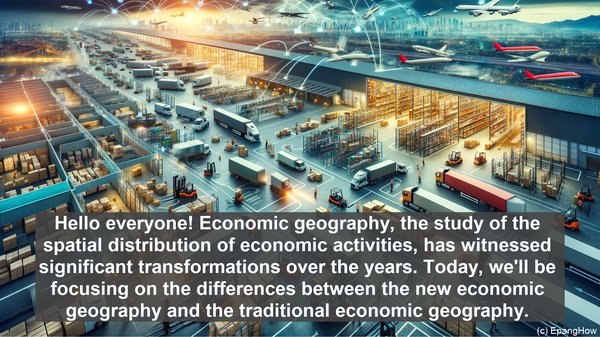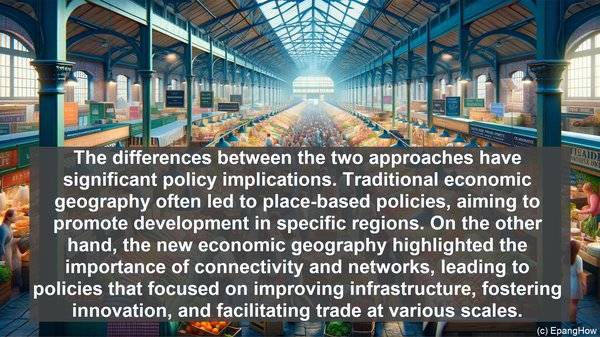Introduction: The Dynamic Field of Economic Geography
Hello everyone! Economic geography, the study of the spatial distribution of economic activities, has witnessed significant transformations over the years. Today, we’ll be focusing on the differences between the new economic geography and the traditional economic geography.
Traditional Economic Geography: A Foundation of Insights
Traditional economic geography, which emerged in the late 19th century, primarily focused on the physical and environmental factors influencing economic activities. It explored concepts such as location theory, which aimed to understand why certain industries thrived in specific regions. Additionally, it analyzed the impact of natural resources, transportation networks, and climate on economic development.
New Economic Geography: A Paradigm Shift
The new economic geography, a relatively recent approach, gained prominence in the 1990s. It introduced a more dynamic perspective, considering factors beyond physical attributes. This approach emphasized the role of agglomeration economies, which are the benefits firms gain from being located close to each other. It also recognized the significance of social and cultural factors, as well as the influence of globalization and technology on economic patterns.
Scale and Scope: Contrasting Perspectives
While traditional economic geography often focused on national or regional scales, the new economic geography adopted a more global outlook. It acknowledged the interconnectedness of regions and the impact of international trade on economic dynamics. Moreover, the new economic geography expanded its scope beyond industrial activities, considering the services sector and knowledge-based industries as well.

Policy Implications: From Local to Global
The differences between the two approaches have significant policy implications. Traditional economic geography often led to place-based policies, aiming to promote development in specific regions. On the other hand, the new economic geography highlighted the importance of connectivity and networks, leading to policies that focused on improving infrastructure, fostering innovation, and facilitating trade at various scales.

